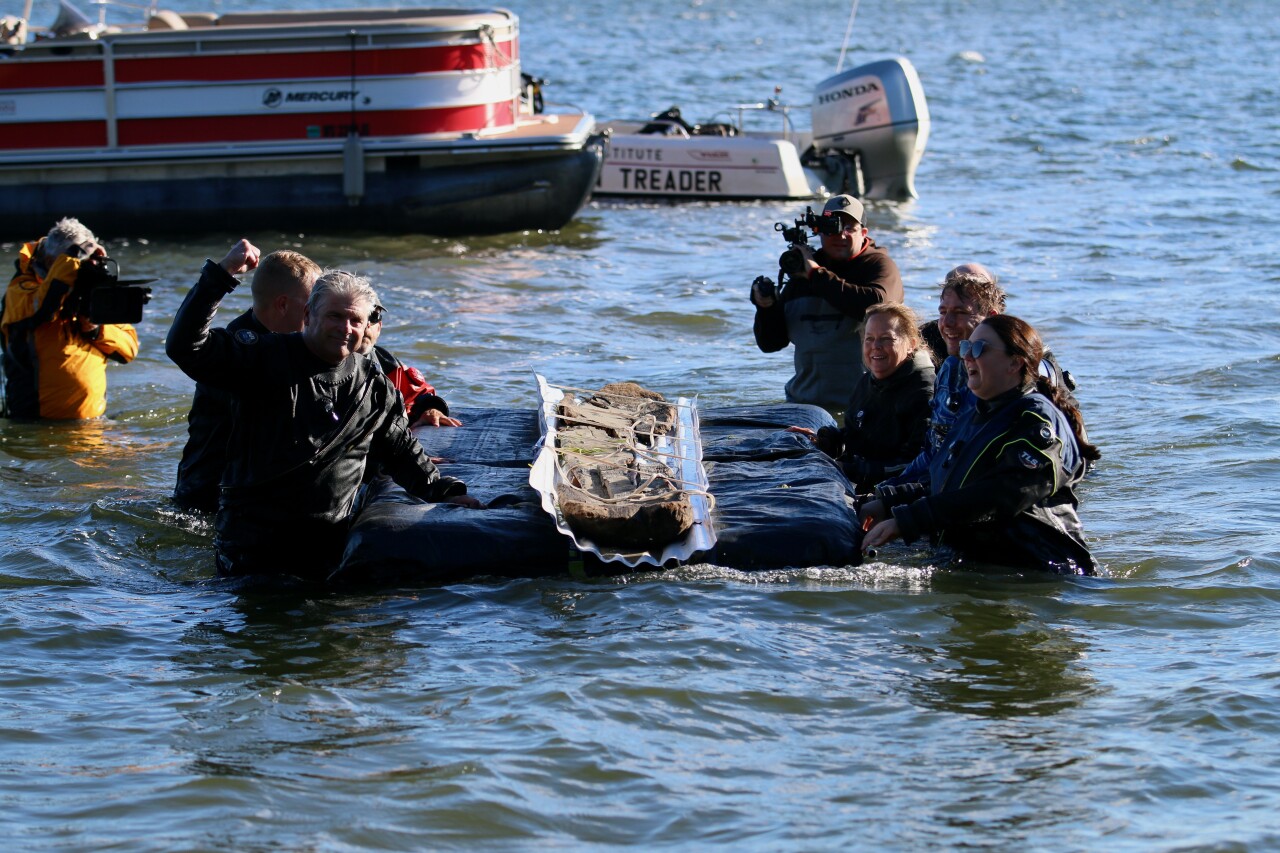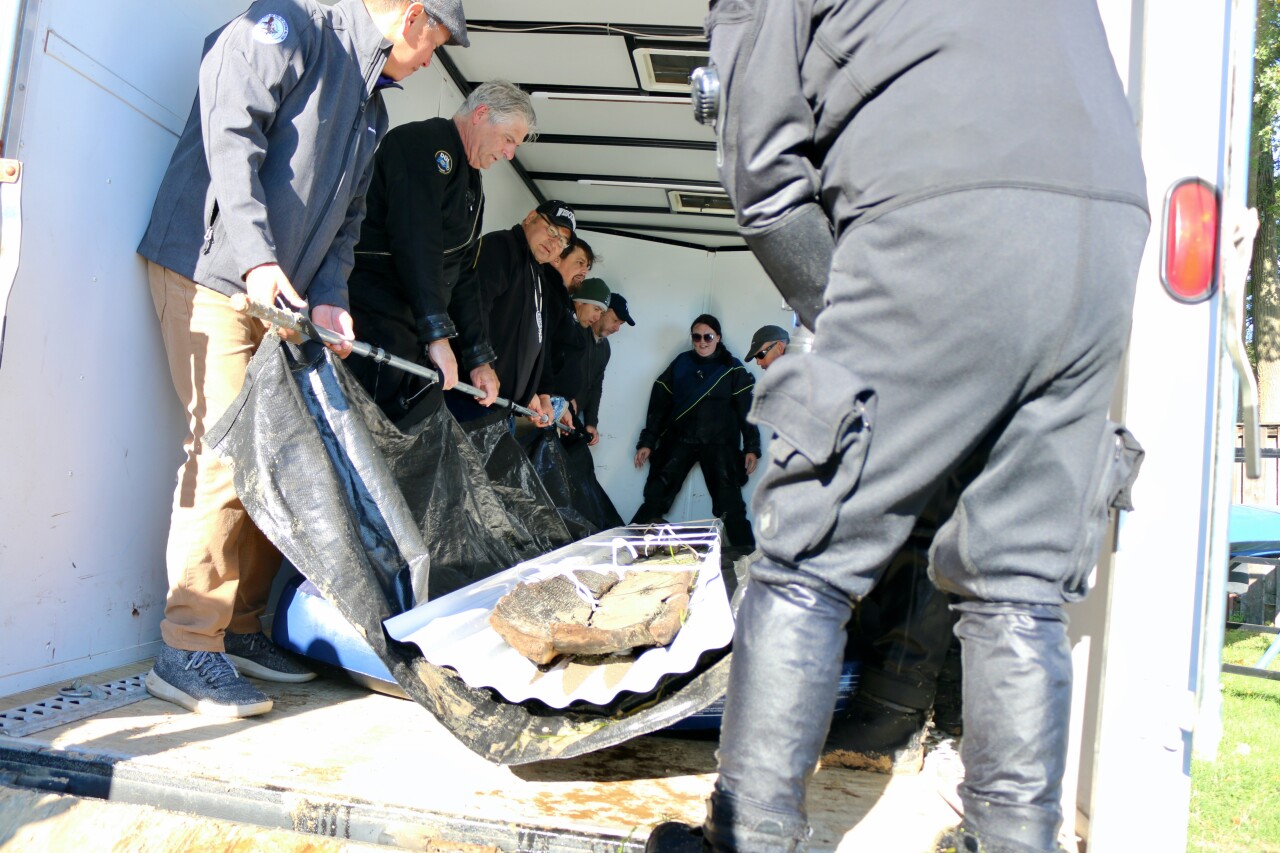MADISON, Wis. — A 3,000-year-old dugout canoe was recovered from Lake Mendota in Madison on Thursday, less than one year after a 1,200-year-old canoe was discovered in the same lake.
Wisconsin Historical Society maritime archaeologists and partners from Wisconsin's Native Nations recovered the canoe, which dates back to 1000 B.C. This makes the canoe the oldest ever discovered in the Great Lakes region by nearly 1,000 years.
RELATED CONTENT: Archaeologists lift 1,200-year-old canoe from Lake Mendota

According to the Wisconsin Historical Society, the dugout canoe is carved from a single piece of white oak and is 14.5 feet in length. Maritime archaeologist Tamara Thomsen first located it during a dive in May. It was found in the same area the first canoe was discovered. Dr. James Skibo, Wisconsin Historical Society state archaeologist, says this suggests the location of Lake Mendota's shoreline may have changed over time.
“Finding an additional historically significant canoe in Lake Mendota is truly incredible and unlocks invaluable research and educational opportunities to explore the technological, cultural, and stylistic changes that occurred in dugout canoe design over 3,000 years,” said Skibo. “Since it was located within 100 yards of where the first canoe was found at the bottom of a drop-off in the lakebed, the find has prompted us to research fluctuating water levels and ancient shorelines to explore the possibility that the canoes were near what is now submerged village sites.”

Ho-Chunk Nation and Bad River Tribe members were present when the canoe was recovered.
“The recovery of this canoe built by our ancestors gives further physical proof that Native people have occupied Teejop (Four Lakes) for millennia, that our ancestral lands are here and we had a developed society of transportation, trade and commerce,” said Ho-Chunk President Marlon WhiteEagle. “Every person that harvested and constructed this caašgegu (white oak) into a canoe put a piece of themselves into it. By preserving this canoe, we are honoring those that came before us. We appreciate our partnership with the Wisconsin Historical Society, working together to preserve part of not only our ancestors’ history but our state’s history.”

The canoe has since been transported to the State Archive Preservation Facility in Madison for preservation and storage. Tribal members and Society staff will clean and care for it. It will then be hand-lowered into a preservation vat where the 1,200-year-old canoe is. Officials say the two canoes will undergo a two-year preservation process which will conclude with freeze-dring to remove remaining water.
“I was amazed when a 1,200-year-old canoe was uncovered last year, but this discovery of a canoe dating back to 1000 B.C. is just extraordinary,” said Wisconsin Gov. Tony Evers. “This incredible finding provides an opportunity for us to work in concert with Tribal Nations to not only study but celebrate the history of the Indigenous people who’ve called this land home since long before Wisconsin became a state, and I look forward to learning more about this artifact’s origins.”

The 1,200-year-old canoe was recovered in November 2021, only a few months after learning of its existence in June. Officials say the vessel was in use around A.D. 800, centuries before European arrival.
For further information on Thursday's recovery, visit the Wisconsin Historical Society's website.




